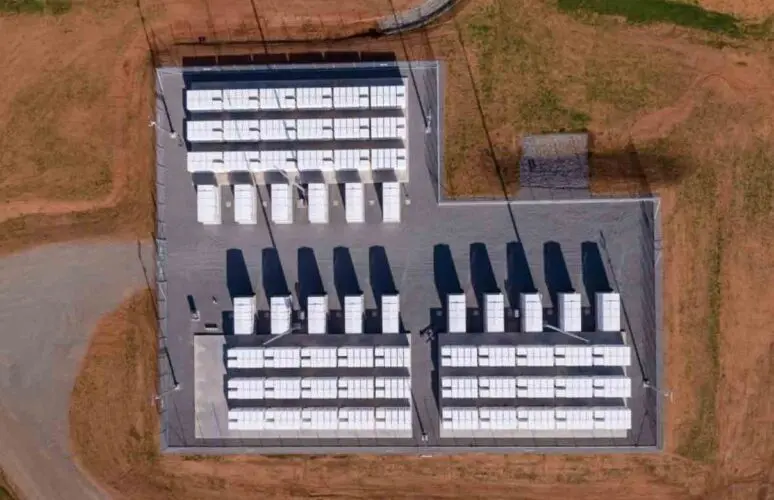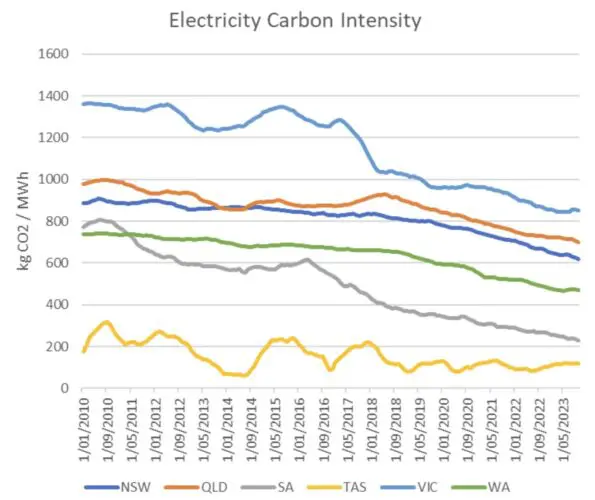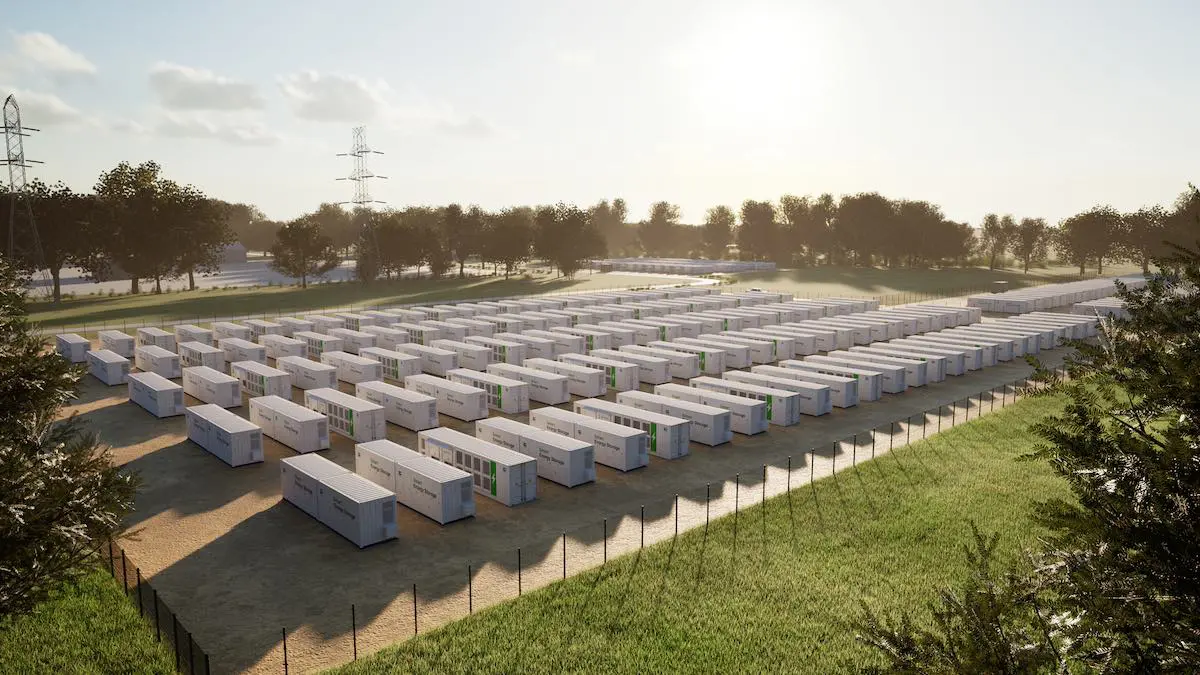The season of renewable records has begun early in Australia, sending average coal power down below 50 per cent for the first time, establishing new records for wind output, and sending demand to new lows across the main grid.
The state at the forefront of the country’s energy transition is, without a shadow of a doubt, South Australia. It kicked out coal in 2016, and is steadily reducing its dependence on gas.
When a new transmission link to New South Wales is completed in the next two years, the state expects to run at 100 per cent net renewables – reducing gas to a support role and becoming the first multi-gigawatt scale grid in the world to reach such a milestone through wind and solar, rather than more conventional renewable sources.
South Australia has no hydro, and attempts a decade ago to extract geothermal energy from deep-lying hot rocks came to nought, so the state has no choice but to turn to wind and solar.
What’s interesting about South Australia is that – contrary to the contrarians – it is not sending the population back into caves, nor is it killing the economy.
Big industry is lining up to build new factories and production facilities to take advantage of cleaner power and lower wholesale prices and BHP is talking of doubling its mining production at the giant Olympic Dam and its smelting and refining capacity.
The latest data shows that wind and solar provided enough power to meet more than 70 per cent of the state’s electricity demand in the last 12 months – although the government says it is 75 per cent. Over the past 30 days it has been 86.4 per cent, and over the past week it has been more than 105 per cent.

South Australia has led the country on the uptake of wind and solar because it opened the doors to developers at a time when other states were fretting about the future of their state or privately owned fossil generators.
They did this because power was already expensive in South Australia, and the state was dependent on a couple of very dirty brown coal generators, expensive gas (despite its immense resources), and the costs of stringing a grid over long distances with a relatively small population.
It’s also led the country in the uptake of rooftop solar, which now supplies the equivalent of all state demand on occasions, presenting a complication for the market operator which prefers to run the grid with assets it can control. It’s working on that solution with new inverter standards and grid protocols, including solar switch-offs.
South Australia also led the country, and the world, in the installation of the first big battery, the original “Tesla Big Battery” now properly known as the Hornsdale Power Reserve.

That initiative followed a state-wide blackout, a conservative collective meltdown, some billionaire tweets and a promise to build the battery in 100 days, at a time when Tesla boss Elon Musk seemed more predisposed to fixing the world’s energy and climate problems rather than Donald Trump’s election campaign.
Now the state is regularly delivering more wind and solar power than it can consume locally, and sometimes more than it can consume and export, so more storage is needed.
Just on that note, Geoff Eldridge, from GPE NEMLog says the combined wind and solar output and curtailment over the last 30 days was equivalent to more than 101 per cent of its electricity demand. The peak figure for solar and wind production and curtailment is 264 per cent, reached on a Saturday last October! More batteries please!
South Australia now has four operating big batteries, another two under construction (Blyth and Templers), and two stuck in a never-ending commissioning hold-up (Lincoln Gap and Tailem Bend, with the latter finally showing some signs of activity).
After this week’s tender results it will have another four big battery projects essential to its 100 per cent renewables target.
South Australia and Victoria were chosen for a “pilot” run of the new Capacity Investment Scheme, now the federal government’s flagship proposal to underwrite some 23 gigawatts of new wind and solar capacity and 9 GW of storage (36 GWh), to propel the grid towards its target of 82 per cent renewables by 2030.
Those two states were chosen because they need it most: South Australia because it faces the retirement of much of its remaining gas power stations (apart from the fast acting peaking facilities), and Victoria because it needs to prepare for the closure of Yallourn, one of its three remaining brown coal carbon pollution factories.
The results announced this week by federal energy and climate minister Chris Bowen included four new big battery projects in South Australia, that will add 1,996 MWh of storage to the local grid, nearly four times the current storage capacity provided by the Hornsdale, Torrens Island, Lake Bonney and Dalrymple batteries.
The winning South Australian projects are:
- Limestone Coast West , a 250 MW/1,000 MWh lithium-ion battery proposed by UK-based Pacific Green Energy, near Mount Gambier, that will be the biggest in the state.
Solar River, a 170 MW/650 MWh lithium-ion battery alongside a 230 MW solar farm, proposed by Adelaide-based Zen Energy, located north of Adelaide between Burra and Morgan.
Clements Gap, a 60 MW/ 143 MWh lithium-ion battery, operated by Pacific Blue, next to its Clements Gap wind farm, in the state’s mid-north.
The 50 MW, 200 MWh Hallett lithium-ion battery being built by EnergyAustralia, also in the state’s mid north and close to the existing Hallett wind farms. Early works have already started on Clements Gap and Hallett.
Combined with the other battery projects currently under construction – Neoen’s 237 MW, 475 MWh Blyth battery and Zen Energy’s 111 MW, 290 MWh Templers battery – that will take the state’s battery storage capacity to around 3,200 MWh.
There are another 2,000 MWh of battery projects are in the pipeline, including the 200 MW, 400 MWh Templers Creek battery from Origin Energy, and all the projects mentioned above have the capacity to expand significantly. The Solar Creek battery, for instance, could grow to more than 2,000 MWh, according to its EPBC application.

“It was a South Australian Labor Government that was at the forefront of bringing grid-scale batteries into the electricity system,” state energy minister Tom Koutsantonis said in a statement earlier this week.
“This template is now being keenly taken up around the world with the recognition that renewable energy, when firmed with batteries, can provide greater reliability and flexibility than once thought possible.
“The system we pioneered continues to set records and break barriers. We are seeing batteries proposed that may have substantially larger storage capacity, longer duration, or both.
“Our state already boasts more than 75 per cent of its energy coming from renewable sources, and we’ve brought forward our target to boost that to a net 100 per cent by 2027.”
And it should be pointed out that emissions have come down. David Osmond, a wind engineer who runs a weekly model illustrating how wind and solar can supply near 100 per cent of Australia’s main grid with not as much storage as people think, notes that South Australia has achieve significant emissions cuts in its grid.
That’s important to note, because the main detractors of renewables, the pro-nuclear lobby, often argue that wind and solar can’t cut emissions.
“To suggest that renewables haven’t reduced emissions in South Australia is outrageously wrong,” Osmond wrote in a recent tweet. In fact, they have fallen by more than 65 per cent, and at a pace comparable with nuclear France.

The next big test of the CIS will be the first generation tender, which is seeking 6 GW of new capacity and has already been swamped by more than 40 GW of project proposals.
Interestingly, just 300 MW of that capacity is reserved for South Australia, perhaps in recognition that their short term needs lie more in storage as the share of wind and solar surges towards 100 per cent net renewables.
It also has the 412 MW Goyder South wind project nearing completion, the state’s biggest, which will be meeting – along with the Blyth battery – a “baseload” renewables contract with BHP’s Olympic Dam.
NSW, on the other hand, is still short of new bulk energy needed to replace the coal fired power generators that are expected to close over the next decade, and 2.2 GW of the renewable tender will be reserved for that state.








